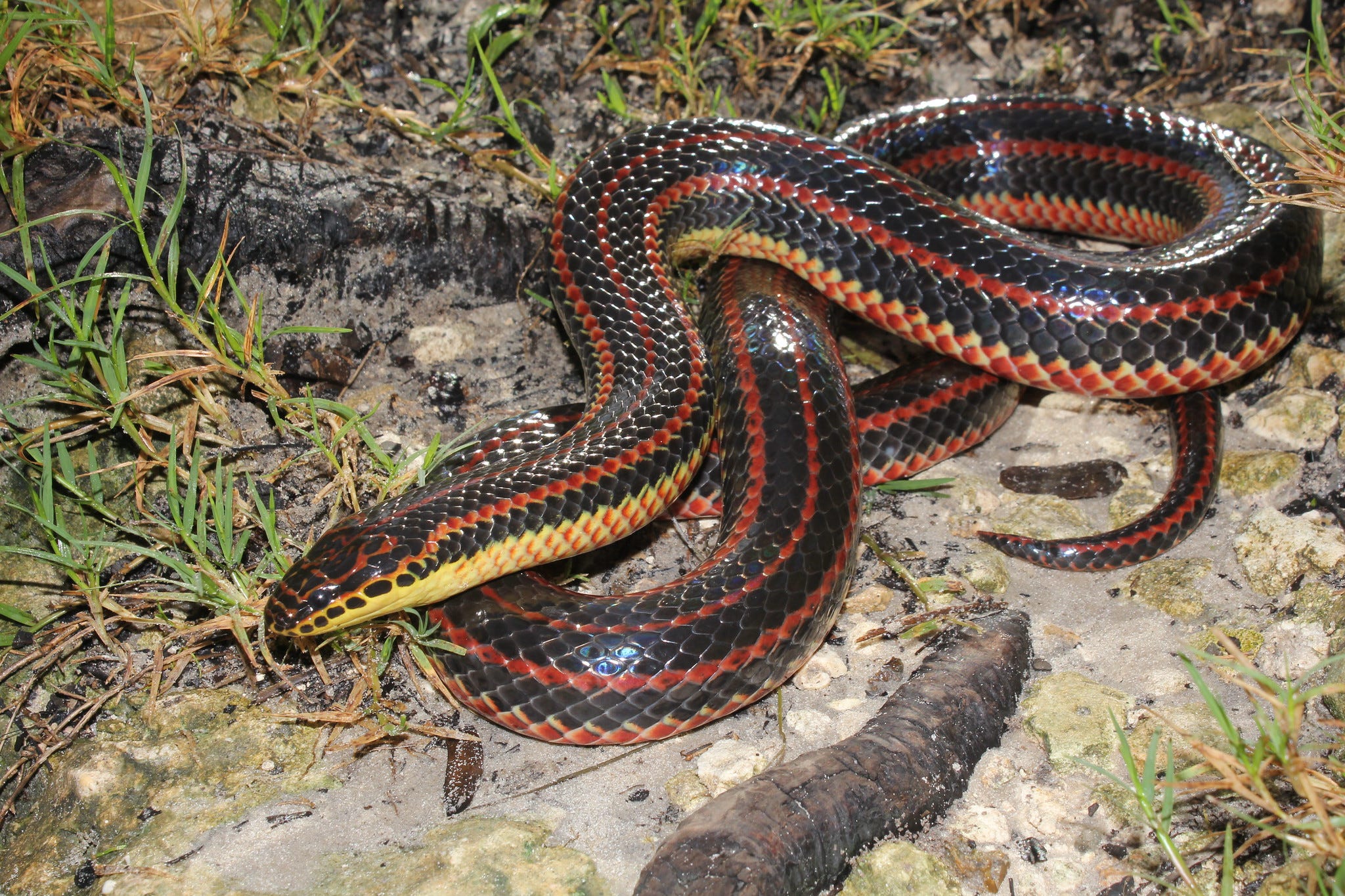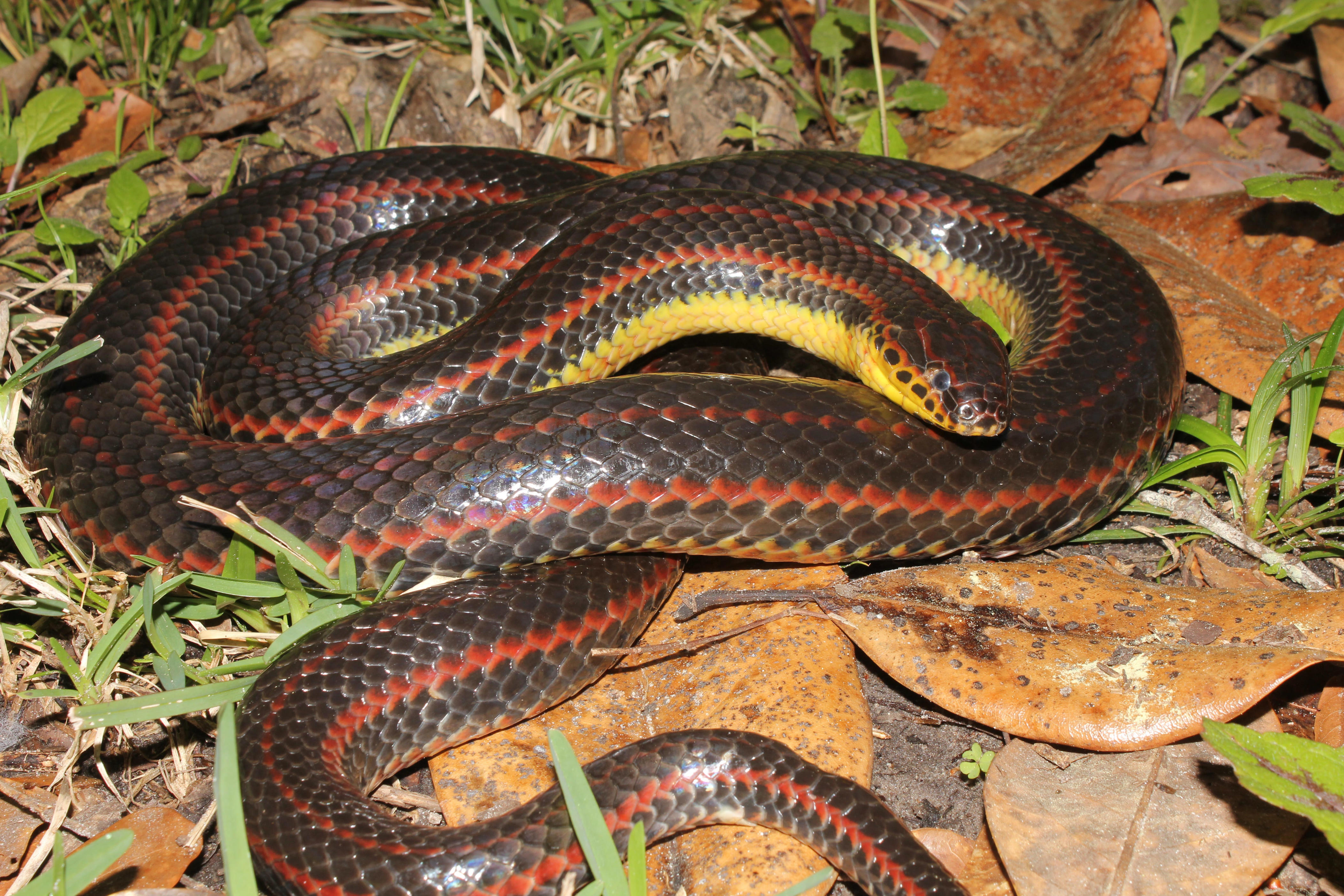Florida has been buzzing with news of rainbow snake sightings, at least 12 of which have been verified by the Florida Fish and Wildlife Conservation Commission (FWC). This comes after they asked locals to help document these elusive creatures.
Last Friday, FWC research scientist Kevin Enge shared with USA TODAY that since their call to action, the commission has gotten around 30 reports. However, out of those, 12 were found reliable, with just eight including photos to confirm the sightings. Some reports were dismissed, not matching the characteristics of the rainbow snakes based on the given descriptions or locations.
Interestingly, two sightings happened on the same driveway in a new neighborhood in Yulee, Nassau County, although in different months. Meanwhile, three reports came from Wakulla County, including one incident at the Wakulla River boat launch, a site where environmental DNA sampling is done by the FWC.
One of the most fascinating encounters took place under a boat motor on a sand bar in the Ochlockonee River, close to Sopchoppy, which is located about 35 miles south of Tallahassee. Another sighting happened near a bridge over a small tributary of the Escambia River in Century, Escambia County, roughly 200 miles to the west of the capital. Roy Gebhard, a resident of Florida, spotted the snake in a popular party area, so he carefully moved it downstream to keep it safe from party-goers. Fortunately, the snake stayed calm and didn’t attempt to bite, seemingly on the lookout for eels.
Check Out These Rainbow Snake Sightings in Florida
Are Rainbow Snakes in Decline?
The rainbow snake, or Farancia erytrogramma, is a nonvenomous type of snake whose numbers have unfortunately dwindled in recent years, a fact noted by the FWC. These snakes face threats from habitat destruction and a decline in their main food source. Their diet predominantly consists of American eels, which are also suffering due to overfishing and habitat alterations.
According to Enge, the common rainbow snake can be found along streams and tidal marshes stretching from southeastern Maryland all the way to southeastern Louisiana. Some areas from Virginia to Georgia still report these snakes quite often. However, in the northern parts of their range, they’re facing issues from snake fungal disease, creating concerns regarding their survival in the long haul.
The last confirmed sighting of the rainbow snake was back in 2020, as indicated by FWC spokesperson Jonathan Veach. He also pointed out that other possible sightings have occurred since without being reported or publicized.

Features of the Rainbow Snake
Rainbow snakes are a visual wonder with their vibrant scales. Typically, they are glistening black or violet-blue, featuring three distinct red stripes down their backs, with their chin and lip scales being yellow with violet speckles, as noted by the commission. Adults generally measure between 3 to 4 feet long.
These snakes prefer habitats near water, including rivers, springs, and brackish marshes. Historically, a subspecies was present in Fisheating Creek in Glades County—over 150 miles south of the next known population in Lake County—but sadly, it hasn’t been seen since 1952. Researchers are hopeful to find evidence of their existence once more.
Need a quick distraction?Why not tackle the USA TODAY Daily Crossword Puzzle?

Reporting a Rainbow Snake Sighting
Enge noted that while social media sometimes features rainbow snake sightings, there hasn’t been any push until now to actively ask the public for their help. “Most people are fishing, boating, or swimming around our waterways and can be key in spotting these snakes for us,” he said. “It’s critical for residents and visitors to assist in learning about the remaining populations of these snakes across our state. Every report helps shed light on their current distribution and spotlights their health in Florida.”
Rainbow snakes tend to be very secretive and aren’t often seen. You might catch a glimpse if you happen to spot one crossing the road between water bodies, particularly after a downpour, as mentioned by the Florida Museum of Natural History.
“Swimmers and divers occasionally notice them gliding along the riverbed in clear, spring-fed waters,” the museum explains.
For anyone who happens to see a rainbow snake, the FWC urges you to report it through their online portal. Sharing pictures along with your report can greatly assist scientists in confirming sightings. This participation is vital for the ongoing conservation efforts related to this rare species.
Snake Bites: The Statistics
Even though rainbow snakes aren’t venomous, snake bites do happen frequently. Each year, around 7,000 to 8,000 individuals across the U.S. get bitten by venomous snakes, as stated by the Centers for Disease Control and Prevention.
Sadly, five deaths each year are attributed to these bites, according to the CDC, and it could be worse if victims didn’t seek medical help right away.
Saman Shafiq is a trending news reporter for USA TODAY. You can reach her at sshafiq@gannett.com and follow her on X and Instagram @saman_shafiq7.
This article originally appeared on USA TODAY: Florida Residents Spot the Rare Rainbow Snake: Check Out the Pictures!





















